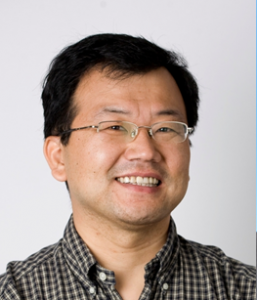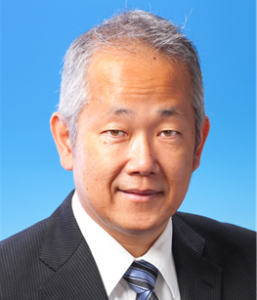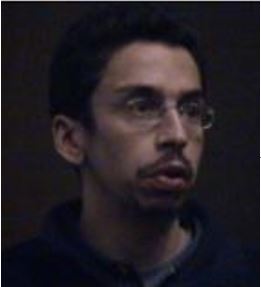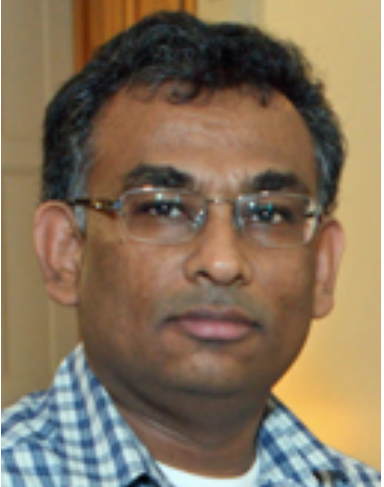All tutorials are half-day long and take place on June 29, 2018
Friday, June 29, 2018
8:30 a.m. – 12:30 p.m.
Room: Amundsen
Tutorial #1: Network Slicing Landscape: A holistic architectural approach, orchestration and management with applicability in mobile and fixed networks
Speakers
- Alex Galis, University College London, UK
- Kiran Makhijani, Future Networks, Huawei Technologies, USA
Tutorial description
This half-day tutorial will present the concepts, design and technologies enabling Network Slicing (NS). NS is both an old and new idea. While its scope and definition continue to evolve, there is reasonable level common understanding of the key central role it will play in future network and service delivery scenarios.
The significant value of network slicing architecture will be seen in terms of dynamic and non-disruptive control, operation and scaling of services in a network slice by the tenant of the slice.
In order to achieve this, a fundamental change in how we administer networks is required in terms of abstraction, separation and mapping of forwarding, control and management aspects of a service. There exists a possibility of applying already mature methodologies such as SDN, NFV, service chains, network virtualization, etc. The challenge lies enabling an operator to flexibly use such tools in a light-weight manner with in a viable architectural framework. The three other major challenges are: a) applying least-effort and minimal provisioning through auto-orchestration of such slices, b) applying new or existing traffic and service engineering techniques to provide dynamic resource assurances for the services, and c) simplified framework for enablement of network slice as a service.
The first part presents the main slicing concepts and their history, key slicing characteristics and usage scenarios, Standard Organization activities in network slicing (ITU-T, IETF, ETSI, other SDOs), Slice Life Cycle Management, Management & Orchestration frameworks, Research & Development projects on Slicing. This part will conclude with identifying research and development challenges in Network Slicing.
The second part presents an industry’s perspective on an overall architecture of network slicing and corresponding operations to demonstrate how an end-to-end slice couple be deployed and managed. It shows many existing standard techniques can be used to simplify network slice workflows. Use case will be thoroughly analyzed. This part will wrap up with a report on progress and approach currently used for standardization of requirements of network slices.
Tutorial outline
- Key Slicing concepts and history
- Slicing Usage scenarios
- Standard Organization activities
- SDN, Virtual Networks and Network Function Virtualisation
- Slicing Life Cycle Management and Management & Orchestration frameworks
- End-to-End multidomain network slices
- Review of Research projects and results in network and cloud slicing
- Network Slicing Challenges
- Industrial perspective on Network slicing
- Review of industry Use Cases
- Concluding remarks of Network slicing
- Acknowledgments & References
Biographies
Alex Galis is a Professor in Networked and Service Systems at University College London (UCL). His current interests are on 5G networking, software defined infrastructure and services, network and cloud programmability and management. He has co-authored more than 280 publications in the future Internet areas: networks and services, management, networking clouds, virtualization and programmability including 10 research books. He has contributed to ITU-T standards on Future Networks and 5G Networks and he has worked on IETF drafts in Autonomic networking and network slicing. He has been a co-principal investigator at UCL on a number of EU research projects with a total UCL budget of more than 10 M£, including overall technical leadership of the MISA – Management of IP networks, FAIN – programmable networks, CONTEXT – context aware networking, AUTONOMIC INTERNET – autonomic network and NECOS – Novel Enablers for Cloud Slicing projects. He was a member of the Steering Group of the Future Internet Assembly (FIA) and he led the Management and Service–aware Networking Architecture (MANA) working group at FIA. He acted as PTC/ keynotes/ panels/ workshops co-chair of 14 IEEE conferences and reviewer in more than 100 IEEE conferences and journals. He is a co-editor of IEEE JSAC series on Network Softwarization and Enablers, ETRI Journal published by Wiley and of the IEEE Communications Magazine feature topic on Advances in Networking Software. He is an International Academy, Research, and Industry Association (IARIA) Fellow (2011, https://www.iaria.org/fellows.html). He was selected as a Vice Chair of the ITU-T SG13 Group on Future Networking. He is involved in IEEE SDN initiative including co-chairing of the IEEE SDN publication committee.
Kiran Makhijani is Principal Research Scientist at Future Networks, Huawei USA. Her current work includes exploring possibilities in the design of next-generation network architectures, technologies and protocols. In particular, realization of network slicing in the context of specialized, purpose-built networks such as building Industrial Internet with reliability and ultra-low latency. With an on-going focus on protocol efficiency, Kiran is an active participant at ETSI’s Next Generation Protocol (NGP) is currently serving as Rapporteur for an integrated architecture of network slicing.
Friday, June 29, 2018
8:30 a.m. – 12:30 p.m.
Room: Hudson
Tutorial #2: Security Issues in SDN and IoT Applications
Speakers
- Baek Young Choi, University of Missouri – Kansas City, US
- Sejun Song, University of Missouri – Kansas City, US
- Alex Sprintson, Texas A&M University, US
Tutorial description
Tutorial outline
- Introduction to SDN security
- Security vulnerabilities and attack surfaces of SDN architectures
- Detection of attacks on SDN architectures
- Leveraging SDN for detecting and mitigating attacks
- Security issues of IoT applications
- Edge computing architecture for IoT applications
- Enabling flexible security services for “Bring your own computer” BYOC settings
- SDN-enabled network access management
- Case studies and demonstrations
- Case 1: Detecting DDoS attacks using SDN frameworks
- Case 2: Mitigating topology poisoning attack using SDN
- Case 3: Intrusion/anomaly detection driven management
Biographies
Baek-Young Choi is an Associate Professor at the University of Missouri – Kansas City (UMKC). Her research interests lie in the broad areas of computer networks and systems including Cloud Computing, Smart Device Technologies, Internet-of-Things, Network Algorithms and Protocols, Data Storage and Management Systems, and Measurement, Analysis and Modeling of Network Traffic, Performance and Security. Prior to joining the University of Missouri – Kansas City, Dr. Choi held positions at Sprint Advanced Technology Labs, and the University of Minnesota, Duluth, as a postdoctoral researcher, and as a 3M McKnight distinguished visiting assistant professor, respectively. She published three books on network monitoring, storage systems, and cloud computing. She has been a faculty fellow of the National Aeronautics and Space Administration (NASA), U.S. Air Force Research Laboratory’s (AFRL) Visiting Faculty Research Program, and Korea Telecom’s – Advance Institute of Technology (KT-AIT). She is a senior member of ACM and IEEE, and a member of IEEE Women in Engineering.
Sejun Song directs the TSL: Trustworthy Systems and Software Research Lab at the University of Missouri – Kansas City (UMKC). Dr. Song has conducted research in the areas of trustworthy information and computing systems and software including resilient IoT, network and system management, and software-defined networks. Prior to joining academia, Song worked in industry for 12 years with Cisco Systems, Honeywell Research Lab, and Positive Networks. A security service start-up company, Positive Network, where he was a director of software architecture, was acquired by Microsoft systems. Song will lead usability testing of web and mobile applications.
Sprintson is a faculty member in the Department of Electrical and Computer Engineering, Texas A&M University, College Station. He received his B.S. degree (summa cum laude), M.S., and Ph.D. degrees in electrical engineering from the Technion in 1995, 2001, and 2003, respectively. From 2003 to 2005, he was a Postdoctoral Research Fellow at the California Institute of Technology, Pasadena. His research interests lie in the general area of communication networks with a focus on wireless network coding, distributed storage, and software defined networks. Dr. Sprintson received the Wolf Award for Distinguished Ph.D.students, the Viterbi Postdoctoral Fellowship, the TAMU College of Engineering Outstanding Contribution Award and the NSF CAREER award. He serves as an Associate Editor of the IEEE Transactions on Wireless Communications. He has been a member of the Technical Program Committee for the IEEE Infocom 2006—2018.
Friday, June 29, 2018
2:00 p.m. – 5:30 p.m.
Room: Amundsen
Tutorial #3: Advanced Topics in Architectural and Robust Operational Research for Virtual Networks
Speakers
- Kohei Shiomoto, Tokyo City University, Japan
- Dimitri Papadimitriou, Nokia Bell Labs, Belgium
Tutorial description
This tutorial presents recent advances in architecture and robust operation of virtual networks. Network virtualization provides the ability to i) concurrently use physical network resources and functions for multiple instances of (virtual) networks while providing isolation so that there is no interference which may affect network performance, ii) aggregate/combine multiple such resources to obtain increased capabilities, and iii) operate heterogeneous network resources and elements as abstract resources, in which a given virtual resource need not directly correspond to its component resources. It aims at bringing benefits such as innovation/deployment of new business roles and players as well as efficient network resource utilization. These benefits are brought by re-architecting network systems to dis-aggregate vertically integrated systems into components. However, despite prominent research and development efforts over last decade, network virtualization still requires addressing several architectural challenges. For instance, the architecture of network virtualization needs to address the dis-aggregation of network systems into components. The conventional mechanism-driven management, that implies the complete understanding of the behavior of each component of the system, should be abandoned and instead rely on data-driven management by applying machine learning techniques. There are also many active research topics on-going in the area of re-architecting middlebox, high-performance NFV platform, and state management in NFV. We will overview recent research in those areas.
The design of reliable virtual networks as well as their operation and management require to account for the probabilistic variability affecting, e.g., customer demands or the physical resources availability, e.g., due various failures. Uncertainty has become the central notion to capture for the optimal solving of various design, dimensioning/provisioning, location, allocation, scheduling and routing decision problems (as well as their combinations) for virtual networks. For instance, the operational model used for the joint server/cache placement, their dimensioning/sizing and demands assignment in virtual content distribution networks leads to strongly interrelated content placement and demand assignment decisions. Hence, preserving the continuity of service delivery while ensuring efficient resource management, requires capturing demand uncertainty as part of the operational model. Optimization under uncertainty has been approached by mathematical programming paradigms that differ mainly in the definition, representation and handling of uncertainty, i.e., by known probability distributions (stochastic optimization) or uncertainty sets (robust optimization). For this purpose, the second part of this tutorial covers in detail the applicability of robust optimization to virtual networks.
Tutorial outline
- Introduction (10 min)
- NFV as re-architecting middlebox (20 min)
- High-performance NFV platform (20 min)
- State management in NFV and SFC (20 min)
- Break (30 min)
- Data-driven management (20 min)
- Robust optimization: modeling and computational techniques (45 min)
- Robust resource placement and allocation (45 min)
Biographies
Kohei Shiomoto is Professor, Tokyo City University, where he is engaged in Research and Education in Network Management for the Internet, Mobile, and Cloud. Before joining Tokyo City University as Full Professor, he spent 28 years in NTT laboratories and was engaged in advanced research on SDN/NFV and Network Analytics, Communication Traffic & Service Quality, Traffic Engineering, IP and Optical Networking and computer networks.
From 1996 to 1997, he was on leave from NTT to join Department of Computer Science and Engineering, Washington University in St. Louis, MO, USA as Visiting Researcher and was engaged in research of high-speed networking technologies.
He received the B.E., M.E., and Ph.D degrees in information and computer sciences from Osaka University, Osaka in 1987 1989, and 1998, respectively.
He is a Fellow of IEICE, a Senior Member of IEEE, and a member of ACM. He is Vice President of Communications Society of IEICE. He received Best Paper Awards from Communications Society of IEICE in 2012. He co-authored “GMPLS Technologies: Broadband Backbone Networks and Systems (Optical Engineering)” Marcel Dekker Inc.
Dimitri Papadimitriou is Principal Research Scientist at Nokia Bell Labs, Antwerp in Belgium. He started at Alcatel Corporate Research Center in 2000, where he worked on multi-layer traffic-engineering research. In 2003, he joined the Research Department dedicated to network distributed control and routing algorithmic.
Since 2007, he works at Alcatel-Lucent Bell Labs (Nokia Bell Labs since 2016) and currently in the Network Algorithmic Analytics Control and Security (NAACS) Research Lab.
Dr.Papadimitriou conducts research on math.programming, network optimization, optimization under uncertainty and related computational methods and algorithms. He authored numerous peer-reviewed papers on distributed/dynamic routing, resilience, performance of multi-layer networks, and network optimization. He led several EU FP7 research projects over last ten years.
Friday, June 29, 2018
2:00 p.m. – 5:30 p.m.
Room: Hudson
Tutorial #4: A Language and Framework for Prototyping and Experimenting with Edge-Oriented IoT
Speaker
- Muthucumaru Maheswaran, McGill University, Canada
Tutorial description
To obtain the most benefit out of edge computing, we need to rethink how applications are developed, deployed, and orchestrated on to the cloud, edge, and IoT resource stack. This tutorial will have three parts. First part will examine the important issues introduced by edge computing for programming IoT applications. The IoT applications primarily want to use edge computing for low-latency resource accesses. Other benefits they seek from edge computing include context-sensitive processing (including machine learning at the edge) and reduced network loading. We will examine IoT with and without mobility (e.g., vehicular IoT). Also, in this part, we introduce many edge programming patterns that could be used in existing and future application scenarios. The second part will discuss a programming language expressly designed for programming the cloud, edge and IoT resource stack. We will introduce the language (JAMScript) in depth and illustrate how it supports edge processing. In particular, its support for handling high-speed data processing at the edge, adaptive placement of functions at the edge or cloud, and failover from edge to edge or edge to cloud will be examined. The language itself is a fusion of C and JavaScript with additional constructs to support remote procedure calls and coordinating the data placements. The third part of the tutorial will show example application designs and their implementations using JAMScript. These example applications will be deployed on a Docker container-based emulator and very large cloud, edge, and IoT configurations will be run. A hands-on exercise on JAMScript will be provided for the tutorial participants that will show how JAMScript and the emulator could be used for developing interesting large-scale edge applications.
Tutorial Outline
- Rethinking applications for the edge
- Edge programming patterns
- A programming language design for cloud, edge (fogs), and IoT
- Introducing JAMScript: A language for edge processing
- Disconnection and fault tolerance in JAMScript
- Running JAMScript experiments in a desktop, emulator, and IoT devices
- Break (30 mins)
- Example edge computing application design
- Hands-on session: deploying JAMScript, running example application, developing example applications
Biographies
Muthucumaru Maheswaran is an associate professor in the School of Computer Science and Department of Electrical and Computer Engineering at McGill University. He got a PhD in Electrical and Computer Engineering from Purdue University, West Lafayette and a BScEng degree in Electrical and Electronic Engineering from the University of Peradeniya, Sri Lanka. He has researched various issues in scheduling, trust management, and scalable resource discovery mechanisms in Clouds and Grids. Many papers he co-authored in resource management systems have been highly cited by other researchers in the area. Recently, his research has focused in security, resource management, and programming frameworks for Cloud of Things. He has supervised the completion of 8 PhD theses in the above areas. He has published more than 120 technical papers in major journal, conferences, and workshops. He holds a US patent in wide-area content routing.















